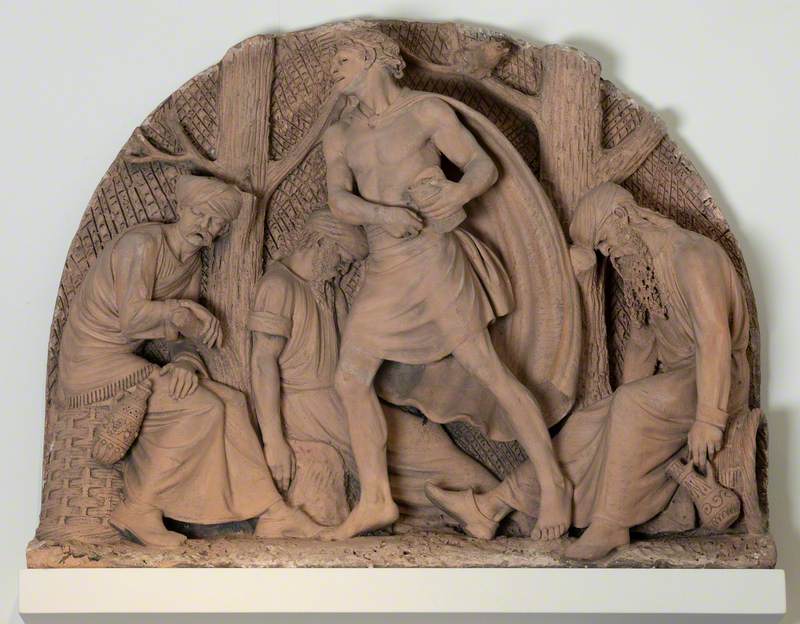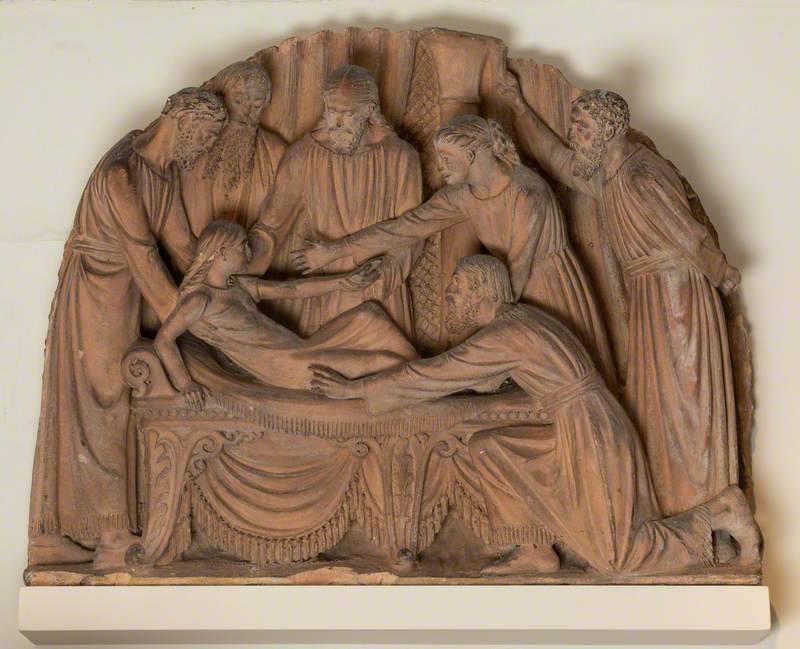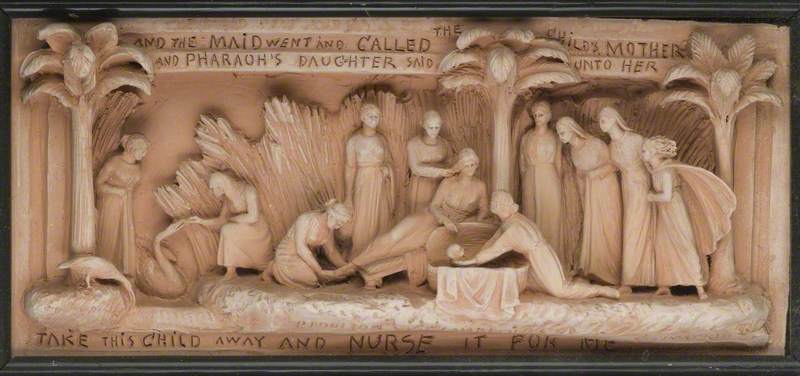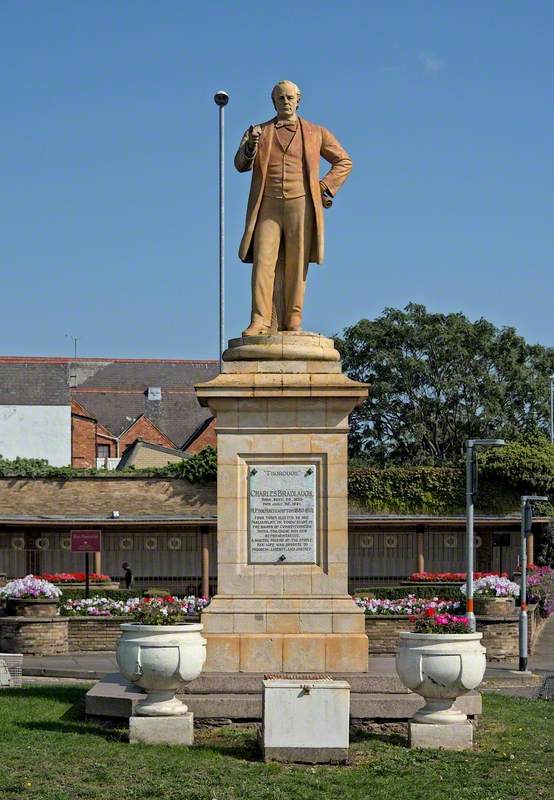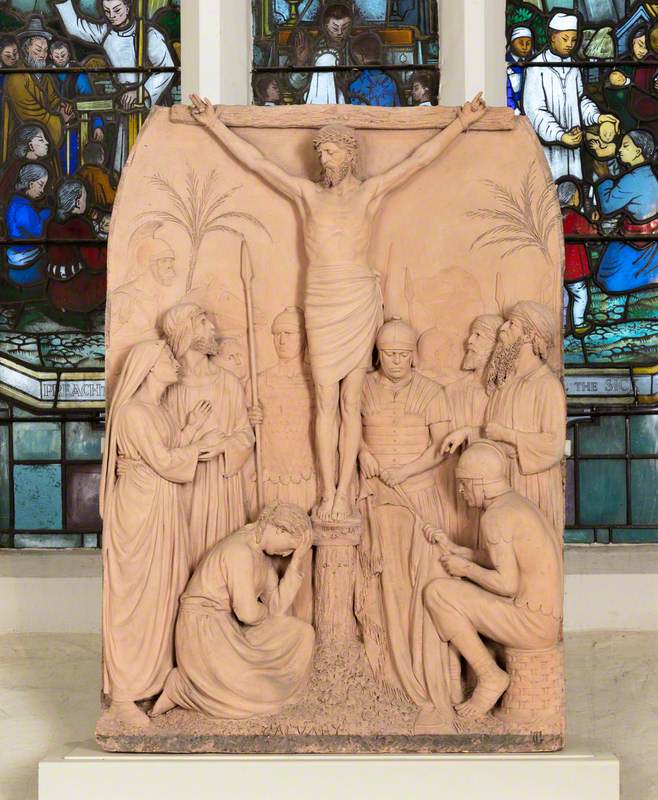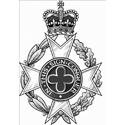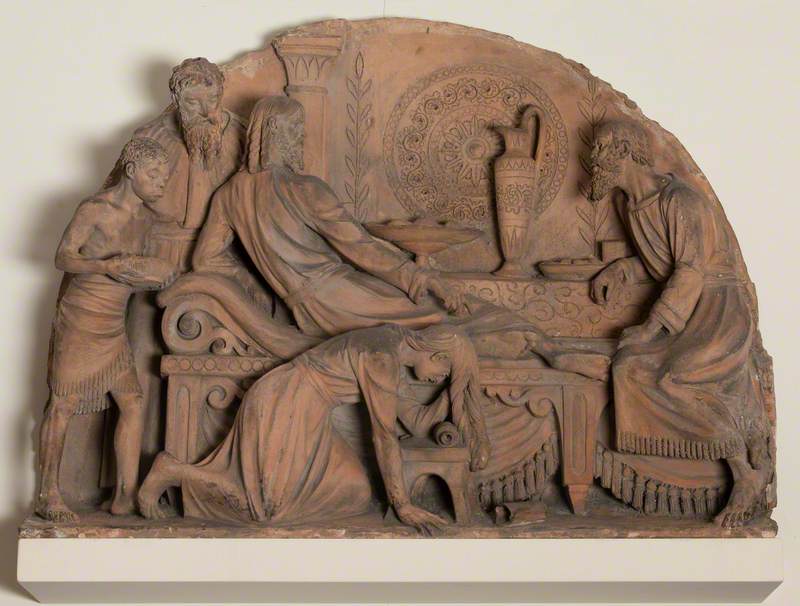
The Woman Washing the Feet of Our Lord c.1878
George Tinworth (1843–1913)
The Museum of Army Chaplaincy
George Tinworth was born in Walworth, Surrey [now London], England on 5 November 1843. He was the son of Joshua Tinworth, a wheelwright with whom he was apprenticed. He also attended Lambeth School of Art from c.1861 to c.1864 where he trained as a modeller following which he attended the Royal Academy Schools in London from 1865 to 1867. In 1867 he began working as a modeller with the Royal Doulton Potteries, Lambeth, with whom he remained until his death. Tinworth worked on a large number of ecclesiastical commissions including for the architect George Edmund Street (1824-1881) a large crucifixion panel for the reredos at York Minster (1876) and 28 panels for the Guards’ Chapel, Wellington Barracks in London (1878). Notable among his public statuary was a terracotta statue of Henry Fawcett in Vauxhall Park in London.
He exhibited at the Royal Academy in London from 1866 to 1885. He also exhibited at the Walker Art Gallery in Liverpool; Bristol Academy; and at the Grosvenor Gallery and Royal Society of British Artists in London. He was elected a member of the Royal Society of British Artists (RBA) in 1889.
His address was given as 5 Hope Street, Walworth, London in 1866 and 1885; 40 Thomas Street, Lambeth, London in 1871; 122 Hill Street, Lambeth, London in 1881; and 8 Maze Road, Richmond, London in 1891; and 8 Maze Road, Kew, Surrey in 1911 and 1913. He died at Putney Railway Station in Putney, London on 10 September 1913.
Text source: Arts + Architecture Profiles from Art History Research net (AHRnet) https://www.arthistoryresearch.net/
